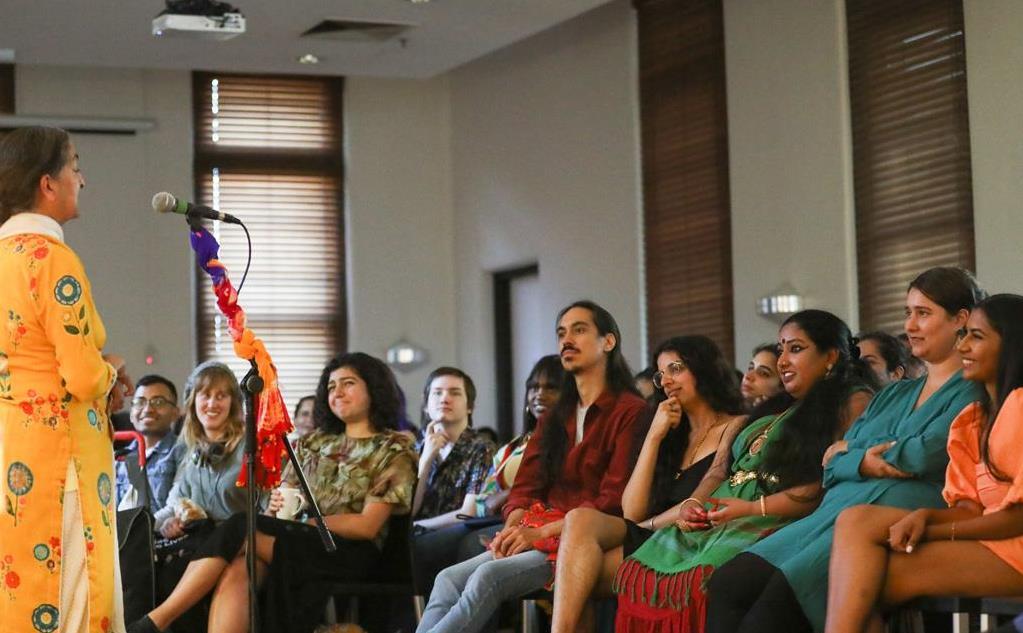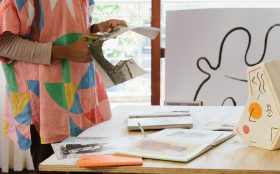I’ve been hearing two distinct messages from colleagues as we contemplate the future of the arts sector, post-COVID-19. The first, and by far the most common, is how can we get back to what we had. The second, which more closely echoes my own sentiments, is how we can go forward without bringing some of the baggage of the past with us.
The first thing we can leave behind is the idea that the arts are an elite pursuit that are only relevant to those who can afford to participate. During these months of isolation, we have all relied on the work of artists to keep us healthy, connected, inspired, distracted and entertained. Imagine for a moment if we had to endure isolation without books, music, films, dance, photography, visual arts and craft.
As makers and consumers of culture we have used this moment of crisis to understand our diverse experiences, communicate empathy to those for whom this has been a truly devastating time, explore stillness and connect to our past through skills we’d long thought forgotten. At a time when so many artists have lost all income, many have used this moment to reach out, placing thousands of works online for free public consumption.
So, can we also leave behind the notion of artists and cultural workers as takers not givers, leaners not lifters? At moments of crisis, whether it be caused by pandemic, bushfire or other disasters, artists mobilise resources, amplify voices and get things done. Artists are taxpayers, leaders, community builders, healers, teachers and chroniclers. They may not be essential workers as currently defined, but they are absolutely essential.
Creative-led recovery has long been at the centre of community building post-crisis, enabling communities to express their unique experiences, their grief and loss, their solidarity and hopes for a better future. Creatives catalyse community resources and energies for rebuilding, reimagining and reigniting our sense of collective purpose and wellbeing.
While we leave these regressive notions in the past, we should also leave behind the structures and practices that result in widespread cultural inequity. With the firm knowledge of the importance of culture in our daily lives, we must recommit ourselves to an arts sector that benefits all, includes all, and represents all. The interesting thing about a moment like this is that we can erroneously believe that we are all in this crisis together, and that everyone is equal in the face of a virus we cannot see.
Read: Why supporting local artists makes cultural and financial sense for festivals
Not everyone has experienced this crisis equally. For those whose life pre COVID-19 was mired with inequity, this moment has exacerbated their situation. These inequities reflect the material conditions imposed on diverse communities, and over which these communities have little control.
Many communities have been re-traumatised as they have relived past experiences of isolation, dislocation and deprivation. In our artistic community, artists of colour are more likely to be in crisis, with employment at a whole new level of precariousness. There has been a steep decline in confidence amongst artists of colour about their financial future, with recent respondents to a national survey feeling weak or very weak about their financial situation (rising from 24.8% to 86.2%). COVID-racism is widespread, the thin veil of politeness ripped away in the face of fear and ignorance. Thousands of artists and cultural workers on temporary visas have been left with no lifeline whilst all sources of income have crumbled. Crisis funds for artists have predominantly gone to those for whom English is their first language, whose familiarity with funding systems and structures privilege them in a still competitive process. The alternative solution of moving one’s work online is predicated on access to technology, resources and audiences – not an option for many.
The structural inequities that underpin an unequal, exclusive and unrepresentative arts sector are still with us, but in this moment of clarity, we could resist the urge to recreate our sector as it was. Instead, let’s create the sector as we would want it to be. We have an opportunity to place cultural equity at the centre of our rebuilding, so that all citizens value, participate in, and fight for cultural rights, as a cornerstone of our society.
With a focus on cultural equity, we could have a roadmap for decolonising the arts, led by First Nations people, as well as a compass for understanding who we are as immigrants on Indigenous land. Through a cultural equity frame, we can address the lack of visibility of many people within our cultural landscape and ensure that one’s postcode and yearly income does not determine one’s right to access culture.
In placing cultural equity at our core, we can finally benefit from the legacy of multiculturalism, which is more than an economic or social proposition. Disaporic artists from across the globe connect us in tangible and dynamic ways to the world, advancing diplomatic efforts, building deep connections, mutual understanding and goodwill that can underpin our future prosperity on so many levels.
Internationally, we have solid examples of cultural equity frameworks that are more than just rhetoric. Starting with joining the dots on data, we need governments to build an accurate picture of participation rates and report on it. We need targets that are measurable and allow for accountability. We need to respond to structural inequity by ringfencing funding and opportunities so that artists from diverse backgrounds have the experience, networks and capacity to compete in an unequal marketplace, whilst those with the power to do so dismantle and rebuild. We need to recognise that support agencies working with these communities do not impede independent practice but underpin it. But perhaps most importantly, we need to recognise that the systems that exclude are relics of an architecture that we designed, and can now redesign.
Cultural equity does not only benefit those who have been marginalised. It benefits us all. A diverse and representative arts sector enables us to learn from the incredible talents and capabilities of those whose resilience at this moment of challenge comes from a lived experience of struggle and survival. How much more confident would we have been through this crisis if our social discourse had been led by those who have lived through such experiences, continue to live through them, build reserves of resilience and survive?
This is the work that will future proof the arts for succeeding generations, and insure us against the impact of future crises.
So, let’s leave behind the notion that arts, culture and creativity are an added luxury to be enjoyed by elites. They need to be central to our path towards recovery. Let’s create ourselves anew, so that our future is one in which everyone can play their part.





